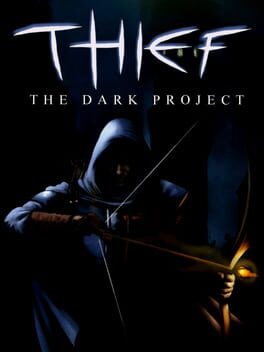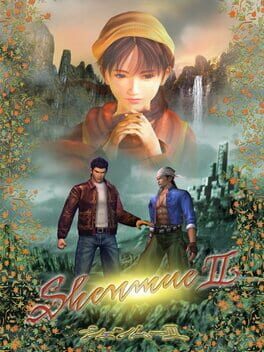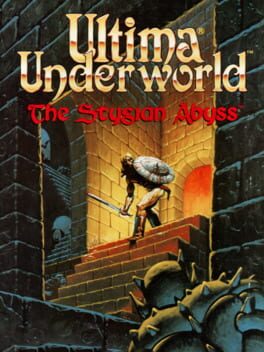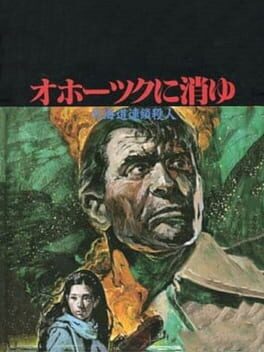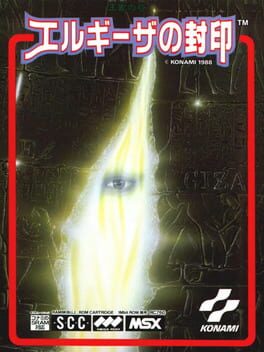abri
Badges

Famous
Gained 100+ followers

Roadtrip
Voted for at least 3 features on the roadmap

1 Years of Service
Being part of the Backloggd community for 1 year

Trend Setter
Gained 50+ followers

Liked
Gained 10+ total review likes

Well Written
Gained 10+ likes on a single review

Donor
Liked 50+ reviews / lists

Shreked
Found the secret ogre page

Popular
Gained 15+ followers

Listed
Created 10+ public lists

Organized
Created a list folder with 5+ lists

Best Friends
Become mutual friends with at least 3 others

Noticed
Gained 3+ followers

Epic Gamer
Played 1000+ games

Elite Gamer
Played 500+ games

Gamer
Played 250+ games

N00b
Played 100+ games
Favorite Games
3195
Total Games Played
000
Played in 2024
000
Games Backloggd
Recently Reviewed See More
Amidst the bubbling pot of sadistic devotion, Wizardry 4 is really one of gaming’s great contrarian statements. A chance to thwart the heroes in an underdog story — the quest upwards for spiritual salvation. Running counter to conventional game wisdom, the Gygaxian langauge is dealt in dissonant logic and prudent play, forcing the player to rethink their approach to dungeon crawling. Without skill check, the labyrinth becomes all the more treacherous, where life or death rests entirely within our pool of knowledge.
Sure. It’s hell. But it’s calculated hell; cunning in all the right ways; wildly eccentric when it sees fit. Supported by its transformative scenario design, there was nothing else this unusual. Roe R Adams had assisted Ultima 4 on a spiritual revolution, defining RPGs as more than mere numbers and combat, using the journey as a basis for moral exploration. The result of his work on Wizardry 4 was the audacious inversion of roles, with not only narrative implication but fundamental change to design. We are ascending; we occupy the top row of the battle screen while the “heroes”' are on the bottom (like every other RPG); we fight with hordes of summoned monsters; and we have a choice of salvation or continued chaos on the surface. How rare was it to have a massive, pre-defined set of party members to choose from, let alone your foes who drove you mad in the first three scenarios. The kicker? If you sent your characters from the original scenarios to Sir-Tech, they would appear as wandering enemies for Werdna to fight. Yes, your battles are against the real adventuring parties of past players.
There are five, wholly unique endings in this game, going beyond the traditional dichotomy of good or evil. All of this is running on the stock 64KB Apple II. These were the days when a bevy of sequels to established franchises were showing up and developers were truly eager to break new ground. Wizardry 4’s mission is clear, in that it's firmly designed for experienced players, but has an imbued sense of moral-purpose backing its foundation. The expression is defined through the challenge of genre convention — and there was perhaps no one more qualified for the task than Werdna, the first iconic RPG villain, who would smite you down without fail in the original game.
(Note: I won’t cover in depth that this was the first game to feature a monster party, a highly original (and controversial) concept for its development time. Megami Tensei did come out the same year, nor do I particularly care for firsts, and prefer to think of game design as a conceptual pool that many draw from).
Much like Wizardry 1, the main enemy of the game is the labyrinthine dungeon, fervently zapping away at your resources. Instead of plunging into the darkness and returning to town for purified air, we must navigate our god-given morbid imprisonment as a means of respite. Said respite is found through the pentagram system (think of these as safe-rooms), but you are either being flanked by hero groups or the mad king, who never ceases chase, moving in real-time (even during idle) and will kill you instantly if found. Can you make it to the next safe-room? The clock is always ticking. The dynamic is that the hero groups will play by your traditional map rules, but the mad king can usurp you at any time, forgoing the board entirely. Staying idle is not an option; it’s a game of continuous movement and tense decision making. We hang on to every last spell. Summoned monsters are your weaponry, but they drop like flies and are prone to fleeing at the hint of resistance. Wandering hero groups fight you as if it’s their last battle. In their world; we are the final boss; and are accordingly shown no remorse. These enemy-types stay permanently dead until you save. Saving resets the mad king's position completely, making him non-threatening. (I will mention to be clear, you can save anywhere in this game, any square, safe or not. And you have enough time to explore, but just enough “push” that it’s imperative to stay moving). Which reprieve will you choose?
This well-crafted risk/reward dilemma places players in a constant state of tension, weighing the need for exploration (further knowledge), the quest for vital resources (spells and items), and the imperative for acute survival — by either rendering enemies dead (don’t save) or ending the mad king’s relentless pursuit (choose to save). This follows the design idea of a tactical-puzzle, in which each floor become a devout ritual of manic exploration and planned resources, in a lead to find the next safe-room. The pentagram is safe from all hostile forces and doubles as a utility hub for resources, such as a rotating cast of monsters and leveling up. Monsters act as the pragmatic puzzle pieces that fit the design as one. Finding out how they work for the situation at hand is paramount to survival, and knowledge of the previous three scenarios is rather valuable, if not essential. Like an enigma being constantly unraveled, the game sees fit to evolve, with monsters and riddles being in constant flux, changing every pentagram. The goal is to fully regain your powers, and believe me, there is no greater satisfaction than when you can finally teleport throughout the entire dungeon and blast the hero scum to smithereens with great demons at your side. The last barrier standing between you and freedom is the Cosmic Cube. If every previous floor has been a delicate challenge of abstract mapping concepts, this is the test that questions how attentive you’ve really been, by bringing all learned principles to the forefront and merging three floors into a quasi-connected "3D" level. (For anyone unfamiliar: Picture a simple 20x20 square grid. A 3D dungeon adds a third coordinate into the mix, meaning you get 20x20x3 and account for a multi-layered map that functions as one with ladders and teleports. A number of paths can reach the exit — making it a highly unique and non-linear puzzle).
By the end, the dungeon presents itself as a large-scale puzzle to solve, and you are able to find an item that sends the mad king to the permanent void, taking him out of the equation entirely. The game does all of this with a clear sense of intention. Playable inferno sure, but a truly bewitching uniqueness that few games can replicate.
Sweet Home rings closest to the design, in that it may have the outer layer of an RPG, but discerning the maze-like structure is more vital than any amount of leveling. Strategic planning is a requirement, with power being incrementally given through the pentagram system and items that play as a finite resource. Grinding is not possible (it is in Sweet Home to be fair, but caps early, and battles are risky, if you die that character is gone for good), so the design is deliberate, to be mapped and solved. Brute forcing your way through the game is far-fetched notion. Our understanding of these games is rather similar. They end up being known for only one thing (decomposing as banal trivia), instead of being assessed on their own terms, as a tense fusion of adventure and RPG design. It may be better described as a true survival RPG — and the game imparts this all too well with layered hostility that never quite settles.
There is an unfounded notion that Wizardry 4 is the hardest game ever made, brutally unfair, as if it can only be one thing. This serves to only strip away the creative authorship of the designer, in which we choose to solely engage with a loaded-definition. At that point, are we actively engaging with the design, or a vague notion of what we think the work should be? (Yes, you’ve seen this before, for a game or any artistic medium). Look. Wizardry 4 is a difficult game. But it isn’t the hardest game ever made; or even atypical of its era, that forged a path on a particular quality of play. The right to win was to be earned — not merely given away as an unequal transaction. Death was a rite of passage that tied together the designer’s ability to communicate game structure and understanding. This isn’t to downplay the challenge, but illustrate that it comes from a place of purposeful intent. The game in actuality is supremely balanced, juggling mechanical complexity on a floor-by-floor basis, and fair for a keen player who is willing to parse it’s deep-rooted design langauge. (That said, the thieves that constantly steal your key-items and run are extremely annoying. This I would have minimized, the only thing in the game I would outright change).
The myth of the first room is quite frankly, bullshit. For reference, you begin the game in a 2x2 dark room with a lone pentagram at your side and a hidden door on the wall. Now, think how unconventional the monster system was, how this room provides a completely safe environment, and teaches us about a secret-heavy game. Even more, the game relies on monster usage relating to the floor at hand, which is also taught here. By getting out of here: We know about secrets, we’ve understood how monsters function in a safe environment, and we’ve learned the importance of pentagrams. This is silent game design, routine for the time, and a rather good bout at that. But you need a priest, right?. Oh dear. Werdna is completely powerless. He is a sitting duck in the bowels of hell. Anyone who has played an RPG for 30 minutes knows that you need a healer on your team. This simple puzzle now ties logic into its teaching exercise and sets the tone for the game accordingly. Right away, we are given the baseline understanding to succeed – all with zero risk of death. Metroid and Dragon Quest 1 both start in a similar manner with a resistant-problem (morph ball and command system, respectively). Presenting friction to the player that allows them to learn the langauge. Funny enough, a sealed envelope was included with the game dubbed “solution to the first puzzle” that mocked anyone who couldn’t get past it and told them to give up, because the real challenge was coming. The most beautiful words an 80’s nerd can hear.
Sir-Tech succeeded tremendously well at the inversion of what a dungeon crawler could be: Taking skill check out of the equation with a dynamic risk/reward scheme and relying on expert-level logic as its preeminent philosophy. The inventive scenario design only served to further the goal, running contrary to all RPGs. It stands alone as this high-concept performance piece — made by the inmates for the asylum — read in silence as a maddening love letter to our earliest roots of gaming. In that sense, Wizardry 4 marks the end of the PLATO lineage. A long lost embodiment of what one culture thought interactive software should be. They don’t make em’ like this anymore. Even attempting so would be futile.
Criminally misunderstood is my verdict. One that paints a stark contrast of ideas; out of the dungeon and into the light. A question of faith that must be earned, through the form of perilous redemption under deafening opposition. It took me over half a year to finish, toiling away at its secrets. At the end of it all, it really does feel like you have climbed the darkest mountain to salvation. I respect the hell out of this game. Video games do not dare to go here again.
Sure. It’s hell. But it’s calculated hell; cunning in all the right ways; wildly eccentric when it sees fit. Supported by its transformative scenario design, there was nothing else this unusual. Roe R Adams had assisted Ultima 4 on a spiritual revolution, defining RPGs as more than mere numbers and combat, using the journey as a basis for moral exploration. The result of his work on Wizardry 4 was the audacious inversion of roles, with not only narrative implication but fundamental change to design. We are ascending; we occupy the top row of the battle screen while the “heroes”' are on the bottom (like every other RPG); we fight with hordes of summoned monsters; and we have a choice of salvation or continued chaos on the surface. How rare was it to have a massive, pre-defined set of party members to choose from, let alone your foes who drove you mad in the first three scenarios. The kicker? If you sent your characters from the original scenarios to Sir-Tech, they would appear as wandering enemies for Werdna to fight. Yes, your battles are against the real adventuring parties of past players.
There are five, wholly unique endings in this game, going beyond the traditional dichotomy of good or evil. All of this is running on the stock 64KB Apple II. These were the days when a bevy of sequels to established franchises were showing up and developers were truly eager to break new ground. Wizardry 4’s mission is clear, in that it's firmly designed for experienced players, but has an imbued sense of moral-purpose backing its foundation. The expression is defined through the challenge of genre convention — and there was perhaps no one more qualified for the task than Werdna, the first iconic RPG villain, who would smite you down without fail in the original game.
(Note: I won’t cover in depth that this was the first game to feature a monster party, a highly original (and controversial) concept for its development time. Megami Tensei did come out the same year, nor do I particularly care for firsts, and prefer to think of game design as a conceptual pool that many draw from).
Much like Wizardry 1, the main enemy of the game is the labyrinthine dungeon, fervently zapping away at your resources. Instead of plunging into the darkness and returning to town for purified air, we must navigate our god-given morbid imprisonment as a means of respite. Said respite is found through the pentagram system (think of these as safe-rooms), but you are either being flanked by hero groups or the mad king, who never ceases chase, moving in real-time (even during idle) and will kill you instantly if found. Can you make it to the next safe-room? The clock is always ticking. The dynamic is that the hero groups will play by your traditional map rules, but the mad king can usurp you at any time, forgoing the board entirely. Staying idle is not an option; it’s a game of continuous movement and tense decision making. We hang on to every last spell. Summoned monsters are your weaponry, but they drop like flies and are prone to fleeing at the hint of resistance. Wandering hero groups fight you as if it’s their last battle. In their world; we are the final boss; and are accordingly shown no remorse. These enemy-types stay permanently dead until you save. Saving resets the mad king's position completely, making him non-threatening. (I will mention to be clear, you can save anywhere in this game, any square, safe or not. And you have enough time to explore, but just enough “push” that it’s imperative to stay moving). Which reprieve will you choose?
This well-crafted risk/reward dilemma places players in a constant state of tension, weighing the need for exploration (further knowledge), the quest for vital resources (spells and items), and the imperative for acute survival — by either rendering enemies dead (don’t save) or ending the mad king’s relentless pursuit (choose to save). This follows the design idea of a tactical-puzzle, in which each floor become a devout ritual of manic exploration and planned resources, in a lead to find the next safe-room. The pentagram is safe from all hostile forces and doubles as a utility hub for resources, such as a rotating cast of monsters and leveling up. Monsters act as the pragmatic puzzle pieces that fit the design as one. Finding out how they work for the situation at hand is paramount to survival, and knowledge of the previous three scenarios is rather valuable, if not essential. Like an enigma being constantly unraveled, the game sees fit to evolve, with monsters and riddles being in constant flux, changing every pentagram. The goal is to fully regain your powers, and believe me, there is no greater satisfaction than when you can finally teleport throughout the entire dungeon and blast the hero scum to smithereens with great demons at your side. The last barrier standing between you and freedom is the Cosmic Cube. If every previous floor has been a delicate challenge of abstract mapping concepts, this is the test that questions how attentive you’ve really been, by bringing all learned principles to the forefront and merging three floors into a quasi-connected "3D" level. (For anyone unfamiliar: Picture a simple 20x20 square grid. A 3D dungeon adds a third coordinate into the mix, meaning you get 20x20x3 and account for a multi-layered map that functions as one with ladders and teleports. A number of paths can reach the exit — making it a highly unique and non-linear puzzle).
By the end, the dungeon presents itself as a large-scale puzzle to solve, and you are able to find an item that sends the mad king to the permanent void, taking him out of the equation entirely. The game does all of this with a clear sense of intention. Playable inferno sure, but a truly bewitching uniqueness that few games can replicate.
Sweet Home rings closest to the design, in that it may have the outer layer of an RPG, but discerning the maze-like structure is more vital than any amount of leveling. Strategic planning is a requirement, with power being incrementally given through the pentagram system and items that play as a finite resource. Grinding is not possible (it is in Sweet Home to be fair, but caps early, and battles are risky, if you die that character is gone for good), so the design is deliberate, to be mapped and solved. Brute forcing your way through the game is far-fetched notion. Our understanding of these games is rather similar. They end up being known for only one thing (decomposing as banal trivia), instead of being assessed on their own terms, as a tense fusion of adventure and RPG design. It may be better described as a true survival RPG — and the game imparts this all too well with layered hostility that never quite settles.
There is an unfounded notion that Wizardry 4 is the hardest game ever made, brutally unfair, as if it can only be one thing. This serves to only strip away the creative authorship of the designer, in which we choose to solely engage with a loaded-definition. At that point, are we actively engaging with the design, or a vague notion of what we think the work should be? (Yes, you’ve seen this before, for a game or any artistic medium). Look. Wizardry 4 is a difficult game. But it isn’t the hardest game ever made; or even atypical of its era, that forged a path on a particular quality of play. The right to win was to be earned — not merely given away as an unequal transaction. Death was a rite of passage that tied together the designer’s ability to communicate game structure and understanding. This isn’t to downplay the challenge, but illustrate that it comes from a place of purposeful intent. The game in actuality is supremely balanced, juggling mechanical complexity on a floor-by-floor basis, and fair for a keen player who is willing to parse it’s deep-rooted design langauge. (That said, the thieves that constantly steal your key-items and run are extremely annoying. This I would have minimized, the only thing in the game I would outright change).
The myth of the first room is quite frankly, bullshit. For reference, you begin the game in a 2x2 dark room with a lone pentagram at your side and a hidden door on the wall. Now, think how unconventional the monster system was, how this room provides a completely safe environment, and teaches us about a secret-heavy game. Even more, the game relies on monster usage relating to the floor at hand, which is also taught here. By getting out of here: We know about secrets, we’ve understood how monsters function in a safe environment, and we’ve learned the importance of pentagrams. This is silent game design, routine for the time, and a rather good bout at that. But you need a priest, right?. Oh dear. Werdna is completely powerless. He is a sitting duck in the bowels of hell. Anyone who has played an RPG for 30 minutes knows that you need a healer on your team. This simple puzzle now ties logic into its teaching exercise and sets the tone for the game accordingly. Right away, we are given the baseline understanding to succeed – all with zero risk of death. Metroid and Dragon Quest 1 both start in a similar manner with a resistant-problem (morph ball and command system, respectively). Presenting friction to the player that allows them to learn the langauge. Funny enough, a sealed envelope was included with the game dubbed “solution to the first puzzle” that mocked anyone who couldn’t get past it and told them to give up, because the real challenge was coming. The most beautiful words an 80’s nerd can hear.
Sir-Tech succeeded tremendously well at the inversion of what a dungeon crawler could be: Taking skill check out of the equation with a dynamic risk/reward scheme and relying on expert-level logic as its preeminent philosophy. The inventive scenario design only served to further the goal, running contrary to all RPGs. It stands alone as this high-concept performance piece — made by the inmates for the asylum — read in silence as a maddening love letter to our earliest roots of gaming. In that sense, Wizardry 4 marks the end of the PLATO lineage. A long lost embodiment of what one culture thought interactive software should be. They don’t make em’ like this anymore. Even attempting so would be futile.
Criminally misunderstood is my verdict. One that paints a stark contrast of ideas; out of the dungeon and into the light. A question of faith that must be earned, through the form of perilous redemption under deafening opposition. It took me over half a year to finish, toiling away at its secrets. At the end of it all, it really does feel like you have climbed the darkest mountain to salvation. I respect the hell out of this game. Video games do not dare to go here again.
Against the backdrop of Northern Japan, a lone designer ponders on the meaning of digital interactivity. Yuji Horii had found his footing in the detective frenzy of Portopia, with subversive rationale in its enigmatic twist, plugging the interface as the perpetrator. For all the proverbial building blocks it set down in worlds of pictorial panels, it lived off that good trick. And it was conclusively not one you perform once more. What we have here is a crossroads - between a rapidly moving games industry - and the burgeoning ideas of a young creator. Hokkaido exists as the answer to lingering design questions, twofold in the refinement of narrative adventure games to follow. The expression of its creator was to find purpose in this computerized frontier. The designer would provide the outline, but the player would be the one to fill in the sketch. Defining their own adventure and evolving as the panels shift to indicate place, with information given not only through words but the images on screen. Much like Dragon Quest and RPGs, it’s a bite-sized journey served with veritable character, wise beyond its years in its ability to tell short stories within interpersonal narrative. The adoption of a command selection system would only fortify the player's ability to piece in that connected outline, jotting vignettes down as they pass by. If there was a blueprint, this would be the one.
Building worlds of interrelated characters has long been a strength of Horii's affective philosophy. Particularly the nature of rolling storytelling that sees fit to reshape with each beat, creating a number of sparse sketches that cascade into one impression. Within that affinity we find visions of lasting space, preserved in all of its glory for architectural prosperity. This was a doorway into the chilly depths of Northern Japan, with vivid shades of early graphical tourism. Real-life settings are depicted in an earnest manner. Each screen swelling with pride: As not only a historical digital artifact but one that provides relevant diegetic information, melding the abstraction between play and investigation as one. Conversations are abundant, with details being wrapped up in small vignettes to-go. The flow of information varies depending on who you’ve spoken to, including whereabouts in the game scenario and specific actions taken by the player. Side characters feel lived in and respondent to your perspective. The game finds itself in a flux, and you’ll that no dialogue is without meaning, with red herrings to keep you alert. Information remains pertinent to to later events, either as foreshadowing or the link that binds that string of murders as one. The supporting cast and perpetrators are well defined, with genuine motivations underpinning the narrative. Subtle animations are on full display - especially in the later Famicom version where more space could be afforded. The weary eyes of the washerwoman glancing at your every move; or the sweating brow of a man who knows more than he’s letting on. There are tiny glimpses of subdued stills that make wistful use of the technology given. Make no mistake: The scenario is a standard detective mystery, but given the constraints of text space and interface, it glows with certain attraction.
The adaption of a command selection system was the big game changer, meaning verb selection was to be done on a menu instead of the conventional parser. Navigating screens became a more fluid experience, giving players keywords to choose from instead of brainstorming from scratch. Players could focus on what designers felt was critical for ADVs, fulfilling the need for brisk scenario design that provoked curiosity with minimal resistance. In Horii’s own words on the decision to change: "it was like reading a novel while doing a crossword puzzle on each page”. Now let’s take a step back: Parser games can be quite inventive, with a driving sense of player freedom and progression. But for the purpose of where the Japanese adventure game was transitioning to, it appeared to be an unorthodox dead-end, simply at odds with their ideal game structure. A game function can only be as important as to what the designer intends. The functionality of the command system would be used in the reworked home console version of Portopia, where it found immense popularity with the two-button scheme, and monumental success in the Dragon Quest series.
It’s easy to see through modern lens how we can adapt games like Ultima, Wizardry and Mystery House to a simplified scheme. But in 1984? What sort of approach do you take? How do you match the keyboard? What are these games doing right? What systems do we take? It takes a good designer to unpack conventions and approach them in meaningful ways, while keeping the original spirit intact. Hokkaido’s answer was to simplify the complexities of computer games and make them palatable for a new audience. And this rests the underlying innovation and persistent trait of Horii’s design philosophy. An entire world of software would be born out of this “edit down” approach, in that we can understand the rigorous conventions, but utilize and adapt them for our own intent. This is a rather notable contribution to Japanese game design, with many tangible applications. Overseas developers like ICOM (Déjà Vu/1985) arrived at similar conclusions with their revolutionary point and click interface that simplified the verb set.
Worth noting: These games are not strictly the first implementation, but the one that revolutionized the trend. Design is often not an isolated case, with many different viewpoints refining a functional concept, so let’s give credit to the developers who are lost to memory and/or poorly documented. The earliest known games that used the command selection system would be Tridental (Pax Softnica/1983) and Planetary Mephius (T&E Soft/1983). The first Japanese developed adventure game was Omotesando Adventure/1982, relying on the conventional parser.
PC-88 vs. Famicom.
Both have been played to completion in their native langauge. The outline of the narrative remains the same, but storyline differences occur at various points. The FC version is less open-ended and a bit more reasonable to approach, with chapters that separate areas to ease new players to ADV conventions. Characters are more cartoon-like, with enhanced graphics and portraits from Kiyokazu Arai, a manga artist and contributor to Login Magazine. Production is lavish and a definite step up. That said, there remains appreciation for the original computer version’s suspenseful atmosphere; the way screens slowly shift like pages of novel; the dark hues of the surroundings and people; even the minimalist BGM contributes to the ambiance. There is an abstract loneliness that is difficult to define, reflecting the era and imagery Yuji Horii and co. dreamt up on their trip to Hokkaido Island.
Building worlds of interrelated characters has long been a strength of Horii's affective philosophy. Particularly the nature of rolling storytelling that sees fit to reshape with each beat, creating a number of sparse sketches that cascade into one impression. Within that affinity we find visions of lasting space, preserved in all of its glory for architectural prosperity. This was a doorway into the chilly depths of Northern Japan, with vivid shades of early graphical tourism. Real-life settings are depicted in an earnest manner. Each screen swelling with pride: As not only a historical digital artifact but one that provides relevant diegetic information, melding the abstraction between play and investigation as one. Conversations are abundant, with details being wrapped up in small vignettes to-go. The flow of information varies depending on who you’ve spoken to, including whereabouts in the game scenario and specific actions taken by the player. Side characters feel lived in and respondent to your perspective. The game finds itself in a flux, and you’ll that no dialogue is without meaning, with red herrings to keep you alert. Information remains pertinent to to later events, either as foreshadowing or the link that binds that string of murders as one. The supporting cast and perpetrators are well defined, with genuine motivations underpinning the narrative. Subtle animations are on full display - especially in the later Famicom version where more space could be afforded. The weary eyes of the washerwoman glancing at your every move; or the sweating brow of a man who knows more than he’s letting on. There are tiny glimpses of subdued stills that make wistful use of the technology given. Make no mistake: The scenario is a standard detective mystery, but given the constraints of text space and interface, it glows with certain attraction.
The adaption of a command selection system was the big game changer, meaning verb selection was to be done on a menu instead of the conventional parser. Navigating screens became a more fluid experience, giving players keywords to choose from instead of brainstorming from scratch. Players could focus on what designers felt was critical for ADVs, fulfilling the need for brisk scenario design that provoked curiosity with minimal resistance. In Horii’s own words on the decision to change: "it was like reading a novel while doing a crossword puzzle on each page”. Now let’s take a step back: Parser games can be quite inventive, with a driving sense of player freedom and progression. But for the purpose of where the Japanese adventure game was transitioning to, it appeared to be an unorthodox dead-end, simply at odds with their ideal game structure. A game function can only be as important as to what the designer intends. The functionality of the command system would be used in the reworked home console version of Portopia, where it found immense popularity with the two-button scheme, and monumental success in the Dragon Quest series.
It’s easy to see through modern lens how we can adapt games like Ultima, Wizardry and Mystery House to a simplified scheme. But in 1984? What sort of approach do you take? How do you match the keyboard? What are these games doing right? What systems do we take? It takes a good designer to unpack conventions and approach them in meaningful ways, while keeping the original spirit intact. Hokkaido’s answer was to simplify the complexities of computer games and make them palatable for a new audience. And this rests the underlying innovation and persistent trait of Horii’s design philosophy. An entire world of software would be born out of this “edit down” approach, in that we can understand the rigorous conventions, but utilize and adapt them for our own intent. This is a rather notable contribution to Japanese game design, with many tangible applications. Overseas developers like ICOM (Déjà Vu/1985) arrived at similar conclusions with their revolutionary point and click interface that simplified the verb set.
Worth noting: These games are not strictly the first implementation, but the one that revolutionized the trend. Design is often not an isolated case, with many different viewpoints refining a functional concept, so let’s give credit to the developers who are lost to memory and/or poorly documented. The earliest known games that used the command selection system would be Tridental (Pax Softnica/1983) and Planetary Mephius (T&E Soft/1983). The first Japanese developed adventure game was Omotesando Adventure/1982, relying on the conventional parser.
PC-88 vs. Famicom.
Both have been played to completion in their native langauge. The outline of the narrative remains the same, but storyline differences occur at various points. The FC version is less open-ended and a bit more reasonable to approach, with chapters that separate areas to ease new players to ADV conventions. Characters are more cartoon-like, with enhanced graphics and portraits from Kiyokazu Arai, a manga artist and contributor to Login Magazine. Production is lavish and a definite step up. That said, there remains appreciation for the original computer version’s suspenseful atmosphere; the way screens slowly shift like pages of novel; the dark hues of the surroundings and people; even the minimalist BGM contributes to the ambiance. There is an abstract loneliness that is difficult to define, reflecting the era and imagery Yuji Horii and co. dreamt up on their trip to Hokkaido Island.
King’s Valley II is masked with ardent care for devilish tradition, daring you to decode the message within. There’s bewitching devotion to the static puzzle box of wits and strategy, crafted under of the guise of lateral thinking. Rooms unfold like artifacts from a lost architect, lingering in the abyss for you to seek out, one screen at time.
From a functional design standpoint, the nuance of these games was built out of direct limitation. Each fragment of the underlying game logic had purpose; obstacles, tools, enemies and so forth. The root is in the simple ingredients, with small tweaks adjusting the framework, escalating as you push the building blocks. The best way to examine the design is understanding how a single ladder or revolving door can drastically alter an entire level’s motive; and how those nouns interact to create deeper logical abstraction on the player's end, forcing them to contemplate their options to succeed. Konami on the MSX was an advocate of making the most of each design space. That philosophy is pushed to its utmost limit, with expression conveyed solely through the lens of a single-screen.
The question remains: If it doesn't enrich the head-scratching, is it any good?
Fortunately, the conceptual mixing pot of King’s Valley II runs quite deep, with each tool forming an adequate base, another layer of the puzzle to chisel away at. A breezy teaching method turns into a test of wits, with proper refinement to progression and further understanding of the basic ask. Design necessitates that you can lock yourself out of a solution, but levels will often have multiple ways to proceed, opening up the range of possibilities. Optimal solves exist, yet much of the fun of these games is navigating a setback or two. The magic is in the conflict — finding your respite out of the abstract puzzle box. When everything clicks into place, it's those little moments of brilliance that stay with the player.
There's a gentle slope up to the midway point, where levels become quite challenging and complex. Levels loop in multiple directions, disappearing floors, revolving doors that lock or lead you to salvation. Herding enemy patterns, with the guards having divergent behavior to navigate with comprehension. Hidden traps that alter the level. Little by little, you are expected to reason with every piece of the framework and have mastery over the tools. There's a lot to take in. Even a level editor to fool around with, where you could create and send your levels in to MSX magazines for the chance to win a gold cartridge. Only 20 in existence - all bearing the recipients name - who knows how many are left at this point. We all become consumed by the great pyramid king at the end — maybe the cover art was onto something.
Give it a go and find out if you got what it takes. It’s a puzzling treat.
From a functional design standpoint, the nuance of these games was built out of direct limitation. Each fragment of the underlying game logic had purpose; obstacles, tools, enemies and so forth. The root is in the simple ingredients, with small tweaks adjusting the framework, escalating as you push the building blocks. The best way to examine the design is understanding how a single ladder or revolving door can drastically alter an entire level’s motive; and how those nouns interact to create deeper logical abstraction on the player's end, forcing them to contemplate their options to succeed. Konami on the MSX was an advocate of making the most of each design space. That philosophy is pushed to its utmost limit, with expression conveyed solely through the lens of a single-screen.
The question remains: If it doesn't enrich the head-scratching, is it any good?
Fortunately, the conceptual mixing pot of King’s Valley II runs quite deep, with each tool forming an adequate base, another layer of the puzzle to chisel away at. A breezy teaching method turns into a test of wits, with proper refinement to progression and further understanding of the basic ask. Design necessitates that you can lock yourself out of a solution, but levels will often have multiple ways to proceed, opening up the range of possibilities. Optimal solves exist, yet much of the fun of these games is navigating a setback or two. The magic is in the conflict — finding your respite out of the abstract puzzle box. When everything clicks into place, it's those little moments of brilliance that stay with the player.
There's a gentle slope up to the midway point, where levels become quite challenging and complex. Levels loop in multiple directions, disappearing floors, revolving doors that lock or lead you to salvation. Herding enemy patterns, with the guards having divergent behavior to navigate with comprehension. Hidden traps that alter the level. Little by little, you are expected to reason with every piece of the framework and have mastery over the tools. There's a lot to take in. Even a level editor to fool around with, where you could create and send your levels in to MSX magazines for the chance to win a gold cartridge. Only 20 in existence - all bearing the recipients name - who knows how many are left at this point. We all become consumed by the great pyramid king at the end — maybe the cover art was onto something.
Give it a go and find out if you got what it takes. It’s a puzzling treat.
